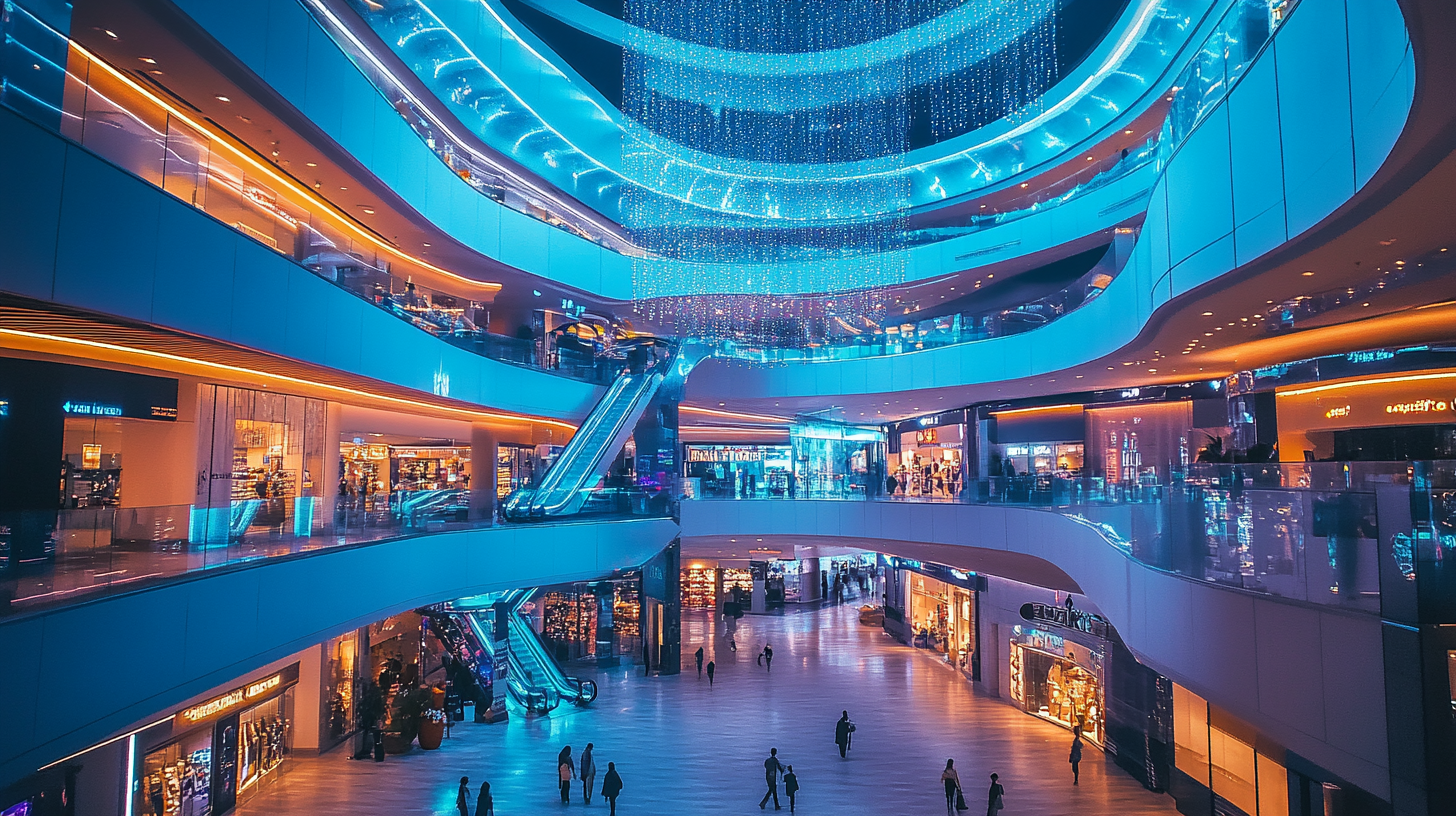Emerging Trends in 2025 and Advantages of Commercial Led Lighting for Global Buyers
In recent years, the world has witnessed a significant shift towards sustainable and energy-efficient solutions, with commercial led lighting emerging as a frontrunner in this transformation. As we look toward 2025, the adoption of commercial led lighting is set to rise, offering a multitude of benefits that cater to both global buyers and the environment. This innovative lighting solution not only helps businesses reduce their energy consumption and operational costs but also enhances the aesthetic appeal of commercial spaces.
As businesses and consumers alike become more environmentally conscious, the advantages of commercial led lighting will continue to attract attention. This blog will explore the emerging trends in the lighting industry, the technological advancements driving these changes, and the distinct benefits that commercial led lighting can provide. From improved energy efficiency to reduced maintenance costs, understanding these trends is crucial for global buyers who aim to invest in lighting solutions that align with future sustainability goals.

Emerging Trends in Sustainable Commercial Lighting Solutions for 2025
As we move toward 2025, the focus on sustainable commercial lighting solutions is becoming increasingly important for businesses looking to reduce their environmental impact. Innovations in technology are driving this transformation, with LED lighting at the forefront. These energy-efficient systems not only consume significantly less power than traditional lighting but also boast longer lifespans, leading to substantial reductions in both energy costs and waste. Another trend is the integration of smart lighting systems that utilize IoT (Internet of Things) capabilities. These advanced solutions enable businesses to monitor and control their lighting closely, optimizing energy usage based on real-time data. This adaptability not only enhances energy savings but also allows for tailored lighting that meets the specific needs of different spaces, further promoting an eco-friendly approach. Moreover, eco-friendly materials are increasingly being used in the production of commercial lighting fixtures. Manufacturers are prioritizing materials that are recyclable or made from sustainable sources, thereby reducing the overall ecological footprint. By adopting these commercial LED lighting solutions, global buyers can not only enhance their operational efficiency but also contribute to a more sustainable future for the planet. As these trends continue to evolve, companies that embrace sustainable lighting will position themselves as leaders in both energy savings and environmental stewardship.

Impact of LED Technology Advancements on Energy Efficiency in Commercial Spaces
The advancements in LED technology are revolutionizing energy efficiency in commercial spaces, paving the way for a more sustainable future. In 2025, businesses will find themselves at the forefront of this transformation, as the latest innovations in LED lighting promise significant reductions in energy consumption. By utilizing advanced microchip designs and smart capabilities, modern LED lights not only consume less power, but also adapt to their surroundings, ensuring optimal performance depending on occupancy and natural light levels.
One of the most notable impacts of LED technology is its longevity, which greatly reduces the need for frequent replacements. Traditional lighting solutions often require regular maintenance and a higher rate of replacement due to shorter lifespans. In contrast, LED systems can last up to 25 times longer, resulting in lower maintenance costs and less waste. This increased durability, coupled with reduced energy usage, positions LED lighting as an economical choice for commercial buyers aiming to improve operational efficiencies while lowering their environmental footprint.
Additionally, the integration of smart technology into LED systems offers businesses unparalleled control over their lighting. Features such as remote management, automated dimming, and energy monitoring contribute to further energy savings. As industries strive for better sustainability practices, adopting commercial LED lighting not only highlights a commitment to environmental responsibility but also enhances the overall workplace experience. In 2025, businesses that harness the potential of LED technology will not only reap cost savings but also set new standards in energy efficiency.

The Role of Smart Lighting Systems in Enhancing Operational Efficiency
As we move into 2025, the integration of smart lighting systems is poised to revolutionize operational efficiency across various sectors. According to a recent report, the global LED lighting market is expected to surpass $85.97 billion in 2023, driven by increasing environmental sustainability awareness. This growth, projected to continue at a compound annual growth rate (CAGR) of approximately 10% until 2032, is a testament to the widespread adoption of energy-efficient lighting solutions.
Smart lighting goes beyond mere illumination; it integrates advanced IoT technologies, which are set to reshape how industries operate. The Gartner maturity curve highlights the critical role of IoT in merging the physical and digital realms, indicating that industries leveraging IoT platforms and event stream processing can significantly enhance their operational efficiencies. By utilizing smart lighting systems, businesses can optimize energy consumption while improving lighting control and automation, resulting in cost savings and a more comfortable environment for employees.
The defense sector is also recognizing the importance of smart lighting, as the military lighting market is expected to reach $11.096 billion by 2033, with a CAGR of 7.06% over the forecast period. This growth reflects the increasing demand for advanced lighting solutions that support operational readiness and enhance visibility in critical situations. As sectors embrace smart technology, the role of smart lighting will only become more vital, driving efficiency and sustainability in workplaces around the globe.

Economic Benefits of Adopting Commercial LED Lighting for Global Enterprises
As global enterprises look towards 2025, adopting commercial LED lighting offers significant economic advantages that are too compelling to overlook. The rapid evolution of LED technology is not just about efficiency; it is changing the entire landscape of commercial lighting solutions. With the market for LED lighting projected to continue its growth trajectory, businesses are increasingly seeing the benefits of making the switch from traditional lighting systems to LED options.
One of the primary economic benefits of LED lighting is its remarkable energy efficiency, which translates into substantial cost savings on electricity bills. Compared to conventional lighting, LEDs consume much less power and have a much longer lifespan. This longevity means reduced maintenance costs and fewer replacements, allowing companies to reinvest those savings back into their operations. For global enterprises operating in different regions, the ability to standardize lighting solutions that save on energy and maintenance enhances their overall operational efficiency.
Moreover, the versatility of LED lighting solutions provides businesses with a range of options that can cater to various aesthetic and functional needs. From enhancing workplace ambiance to improving safety and security, LEDs can be customized to meet specific requirements while keeping costs manageable. As organizations around the world aim to enhance their sustainability profiles, the environmental benefits of LEDs—along with their economic advantages—make them an attractive choice for businesses eager to innovate and thrive in a competitive marketplace.
Analyzing Market Growth: Statistics and Predictions for LED Lighting Adoption in 2025
As we approach 2025, the adoption of LED lighting continues to gain momentum, driven by the increasing demand for energy-efficient and sustainable solutions. The latest statistics highlight significant market growth, with projections indicating that the global LED lighting market will flourish. With advancements in technology, LED products are becoming more affordable and accessible, making them an attractive option for commercial buyers worldwide. The shift towards smart lighting systems is also influencing the market, as businesses seek to enhance energy efficiency and reduce operational costs.
A particularly noteworthy segment is the solar lighting market, with a projected growth analysis from 2025 to 2034. The integration of solar technology into LED lighting solutions not only provides a renewable energy source but also contributes to cost savings and sustainability. This dual innovation ensures that global buyers can expect enhanced performance and reduced environmental impact from their lighting choices. Statistical forecasts suggest that, as more companies recognize the benefits of solar LED lighting, adoption rates will soar, marking a transformative period for the lighting industry.
With the convergence of LED technology and solar power, the commercial lighting landscape is set to evolve significantly by 2025. This trend promises not only to meet the growing demand for eco-friendly lighting solutions but also to enrich the overall customer experience as businesses leverage innovative designs to create inviting and productive environments. Such developments underscore the importance of staying informed about market trends to make optimal purchasing decisions in the competitive landscape of commercial lighting.

